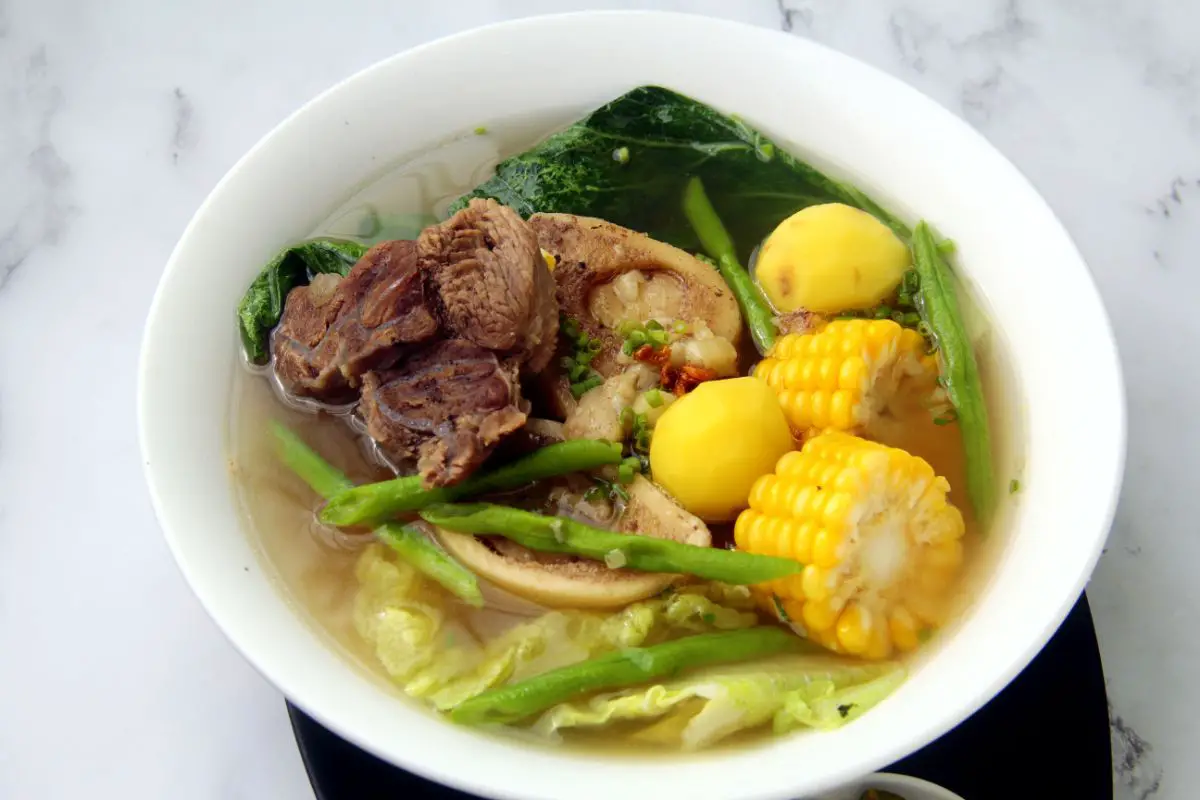Savor Conventional Filipino Flavors With Easy-To-Follow Recipes
Discovering standard Filipino cuisine supplies a distinct chance to involve with a rich tapestry of tastes and cultural stories. As we check out these cooking practices, one might question just how to best bring the heat of Filipino hospitality to their very own dining table.

Introduction of Filipino Cuisine
Checking out the dynamic tapestry of Filipino cuisine discloses an abundant social heritage affected by different historical and geographical elements. The Philippines, an island chain of over 7,000 islands, boasts a varied array of flavors and cooking techniques. The country's cooking landscape is formed by aboriginal practices and the impacts of emigration, trade, and movement. As a result, Filipino food is a special mix of Malay, Spanish, Chinese, and American components.
Rice functions as the foundation of Filipino meals, often gone along with by an assortment of vegetables, meats, and fish and shellfish. The use of strong tastes is a trademark of the cuisine, with active ingredients such as garlic, onions, ginger, and soy sauce playing essential duties. The emphasis on common dining shows the Filipino society of friendliness and household connections.
Street food additionally plays a significant duty in the culinary scene, showcasing regional active ingredients and imaginative cooking methods. As the Philippines continues to accept globalization, the fusion of conventional and contemporary impacts can be seen in contemporary Filipino dishes, further improving its cooking identification. Filipino food recipes. In general, Filipino cuisine is a testimony to the country's background, society, and dynamic spirit
Must-Try Standard Recipes
Filipino cuisine is best experienced through its traditional meals, each supplying a distinct insight right into the country's diverse cooking heritage. Amongst the must-try meals is Adobo, a mouthwatering stew typically made with chicken or pork, seasoned in vinegar, soy sauce, and garlic before being slow-cooked to excellence. Its rich and appetizing taste profile stands for the heart of Filipino comfort food.
One more famous recipe is Sinigang, a sour soup commonly prepared with tamarind, tomatoes, and various veggies. This dish can include pork, shrimp, or fish, and is cherished for its refreshing taste and warming up qualities.
Lechon, an entire roasted pig, is a focal point at Filipino events, recognized for its crispy skin and tender meat. It symbolizes the festive spirit of Filipino celebrations.
For those desire something pleasant, Halo-Halo is a wonderful treat integrating smashed ice, sweetened fruits, jellies, and covered with leche flan and purple yam.
Each of these traditional meals encapsulates the essence of Filipino culture, welcoming any person to savor the vivid tastes and abundant background that define the island chain's cooking landscape.
Step-by-Step Recipes
Food preparation genuine Filipino meals in your home can be an enriching experience that brings the lively tastes of the Philippines into your kitchen area. With a myriad of traditional recipes to select from, utilizing step-by-step recipes allows both beginner and skilled cooks to grasp the techniques and tastes indispensable to Filipino cuisine.
Begin by selecting a meal that intrigues you, such as adobo, sinigang, or lumpia. Each dish often includes a detailed active ingredient list adhered to by clear instructions, leading you try this website via the food preparation process. Start with preparation, which may include marinating proteins, slicing veggies, or determining spices. This foundational action ensures a smooth cooking experience.
As you proceed, pay attention to food preparation methods special to Filipino cuisine, such as sautéing (ginisa) or stewing (nilaga) These techniques can considerably boost the deepness of taste in your dishes. Timing is vital; comply with the suggested food preparation times to accomplish the best texture and taste.
Important Components and Tips
Frequently, the secret to understanding Filipino cuisine lies in understanding and using necessary ingredients that specify its distinctive tastes. Central to many meals are staples like soy sauce, vinegar, garlic, and ginger, which add to the one-of-a-kind balance of savory, sour, and sweet notes. Soy sauce functions as a base for marinades and sauces, while vinegar, specifically cane vinegar or coconut vinegar, passes on a zesty illumination that is crucial in meals like adobo.
Rice is an important element of Filipino meals, usually offered alongside main dishes to absorb flavorful sauces. For a touch of credibility, choose for jasmine or long-grain rice. Furthermore, using fresh fruit and vegetables such as tomatoes, environment-friendly beans, and eggplants improves the meal's vibrancy and dietary worth.
Do not ignore the relevance of natural herbs and spices, such as bay leaves, lemongrass, and chili peppers, which elevate the taste account. When food preparation, bear in mind that patience is essential-- enabling active ingredients to fuse with each other leads to richer flavors. Embrace the practice of tasting as you go; this will certainly enable you to adjust seasonings check it out and accomplish the ideal equilibrium that characterizes Filipino food.
Offering and Enjoying Filipino Meals
Recognizing the subtleties of Filipino food extends past prep work and ingredients; it encompasses the means meals are offered and delighted in. The Filipino eating experience is identified by communal sharing, promoting a feeling of togetherness and party. Generally, meals are provided in huge portions, allowing restaurants to take part in a variety of tastes.
Rice, a staple in Filipino meals, is typically served as the foundation whereupon the other recipes remainder. Accompanying viands, such as adobo, sinigang, or lechon, are positioned in the facility of the table, welcoming visitors to offer themselves. Filipino food recipes. This practice not just promotes a loosened up atmosphere yet additionally motivates discussions and links among diners

Final Thought
In verdict, typical Filipino food supplies a rich tapestry of flavors and social significance, welcoming exploration via its check out this site diverse dishes. Involving with this vibrant cuisine not only enhances the eating experience yet additionally preserves and commemorates the heritage of the Filipino individuals.